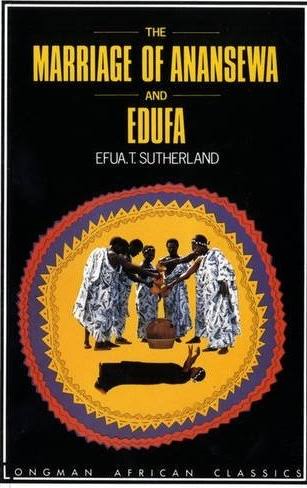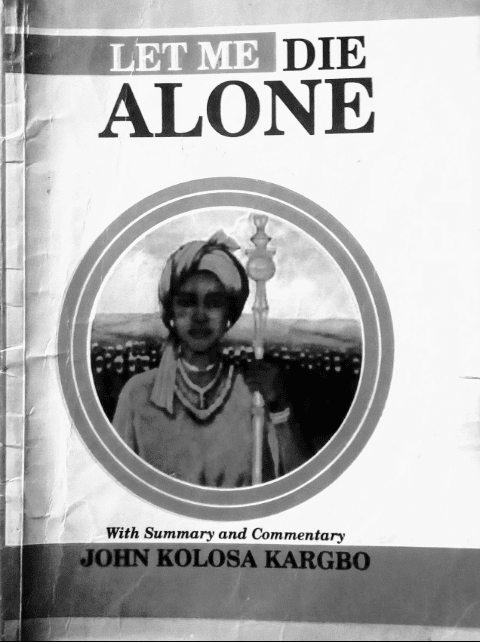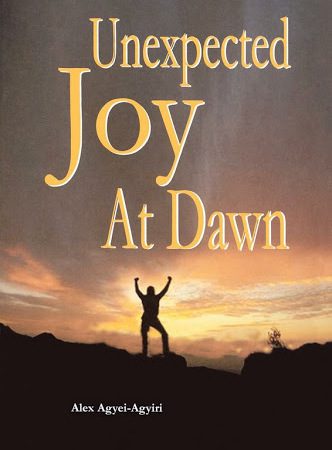
The Marriage of Anansewa is dominated by the themes of poverty and ambition, wit and cunning, love and materialism, matchmaking, and African marital tradition.
The themes are justifiably sustained by the actions and the antics of the trickster in Ananse, the protagonist of the play.
Poverty and Ambition
The theme of poverty and ambition is prevalent in the play.
Ananse’s desire to better his position in life, obtain access to wealth, and rise to a higher social rank is the central theme of the entire play.
At the opening of the play, Ananse is depicted as a suffering, unhappy man who lives in a leaky, poor excuse of a house.
He also has certain bills that need to be paid off, including his daughter’s school fees and the final installment on the typewriter he bought for her.
He then takes advantage of his daughter’s marriage to profit from the numerous suitors without jeopardizing her prospective love union.
Ananse’s progress from poverty to success as well as the challenges he faced along the way meticulously emphasises the theme of poverty and ambition.
Wit and Cunning
Ananse’s cunning and extraordinary intelligence are highlighted.
In the Ghanaian folktale, Ananse is the spider who, like the fox and the tortoise in other cultures, is said to have a keen sense of mischief, cunning, and intelligence that frequently allows him to maneuver through incredibly tight spaces and challenging circumstances.
For instance, Ananse eventually escapes from difficulties in this play with an equally impressive display of wit and intelligence thanks to his overwhelming avarice and cunning.
Love and Materialism
Although true love and material love are diametrically opposed concepts, Ananse finds a way to harmonize them in this drama.
Despite being driven by his own financial gain, Ananse manages to make his daughter’s marriage based on pure love in the process.
Matchmaking
Since matchmaking is frequently driven by material concerns instead of genuine love, this is another perspective on the issue of love and materialism.
The idea of matchmaking, however, always involves a third party who brings the couple together, often for their own selfish gain, in contrast to the former theme.
The practice of forced marriage, in which a young, innocent girl is “sold out” to a man against her will, should therefore be the focus of discussion on this issue.
Ananse begins his plans for Anansewa by photographing her in various poses. He takes her photographs to some wealthy chiefs in order to make marriage arrangements with them.
At first, Anansewa herself rejects the notion of being sold out “like some parcel to a consumer” and insists on picking her own lover instead.
But as the play goes on, we come to understand that this is a matchmaking with a twist—a matchmaking in which love is a significant factor.
Anansewa develops a love for Chief-Who-Is-Chief as a result of Ananse’s efforts, and she grows more and more willing to endure any hardship or do anything in order to be with him.
In the end, we are convinced that Anansewa could not have chosen a better marriage for herself because the chief himself proves to be the best and most sincere of all the suitors.
Ananse therefore chooses mild persuasion over force to bring about this ideal marriage.
African Marital Tradition
African marital tradition is clearly portrayed in Efua T. Sutherland’s The Marriage of Anansewa.
The payment of the bride price, for example, is typically viewed in the African marital tradition as the true sign of the marital union, without which no marriage can be regarded as legal.
The placing of the head-drink (symbolized by a symbolic amount of money and some drinks) is a crucial procedure by which the marriage is legally registered in this drama, which is based on a Ghanaian tradition.
Typically, members of the bride’s family are given it by the suitor’s family.
Without the usual head-drink ceremony, no amount of cash or freely given presents can make the relationship legal. This is one of the significant aspects of the African marriage tradition depicted in the play.
Ananse exploits this significant traditional event to enrich himself at the detriment of the four rich suitors. He also ensures that three of them are not present for the head-drink ceremony.
Another important aspect of the African marriage tradition portrayed in the play is the outdooring ceremony. It is an important preparation towards marriage.
It signifies that Anansewa is ripe for marriage. It is also an avenue for elders to chant and invoke prayers for the prospective bride.
Read Also:
- Dramatic Techniques in “The Marriage of Anansewa”
- Characterisation in Efua T. Sutherland’s “The Marriage of Anansewa”
- Plot Summary of Efua T. Sutherland’s “The Marriage of Anansewa”
- The Marriage of Anansewa: Things You Need to Know
 WHATSAPP: Click HERE to join the new Literature PADI WhatsApp group to receive latest updates on your phone and for further literary discussions!
WHATSAPP: Click HERE to join the new Literature PADI WhatsApp group to receive latest updates on your phone and for further literary discussions!










Keep it up
I love your works
It helps a lot thanks ????????
Ilove everything about your works it’s so amazing
Do well.
It’s not that bad, nice work 😘🤩👍👍
Comments are closed.